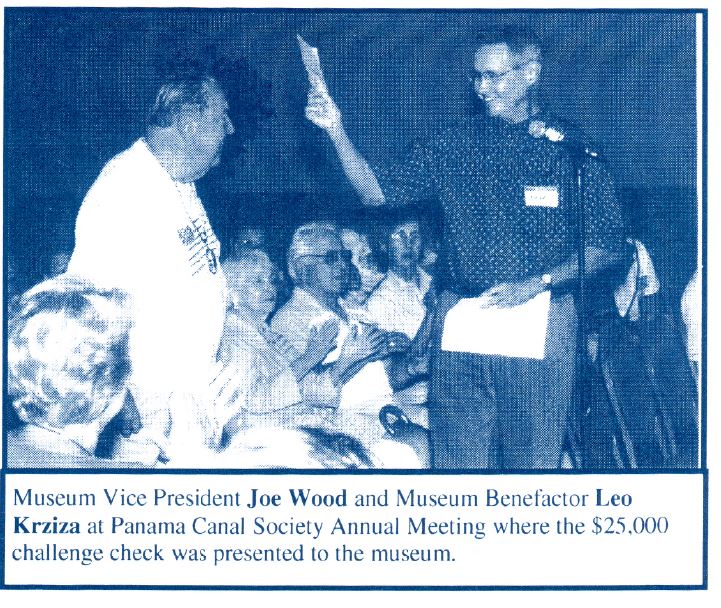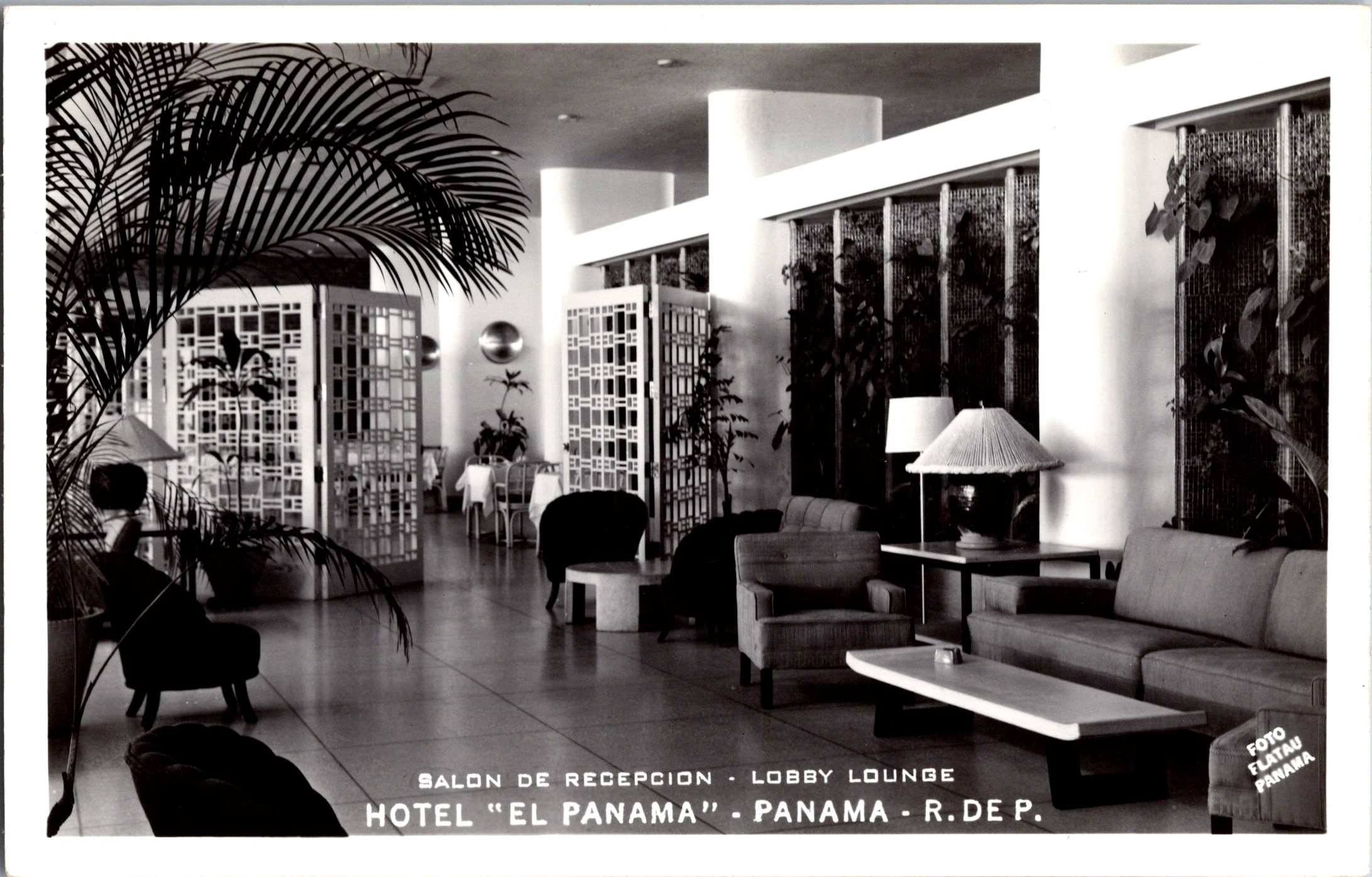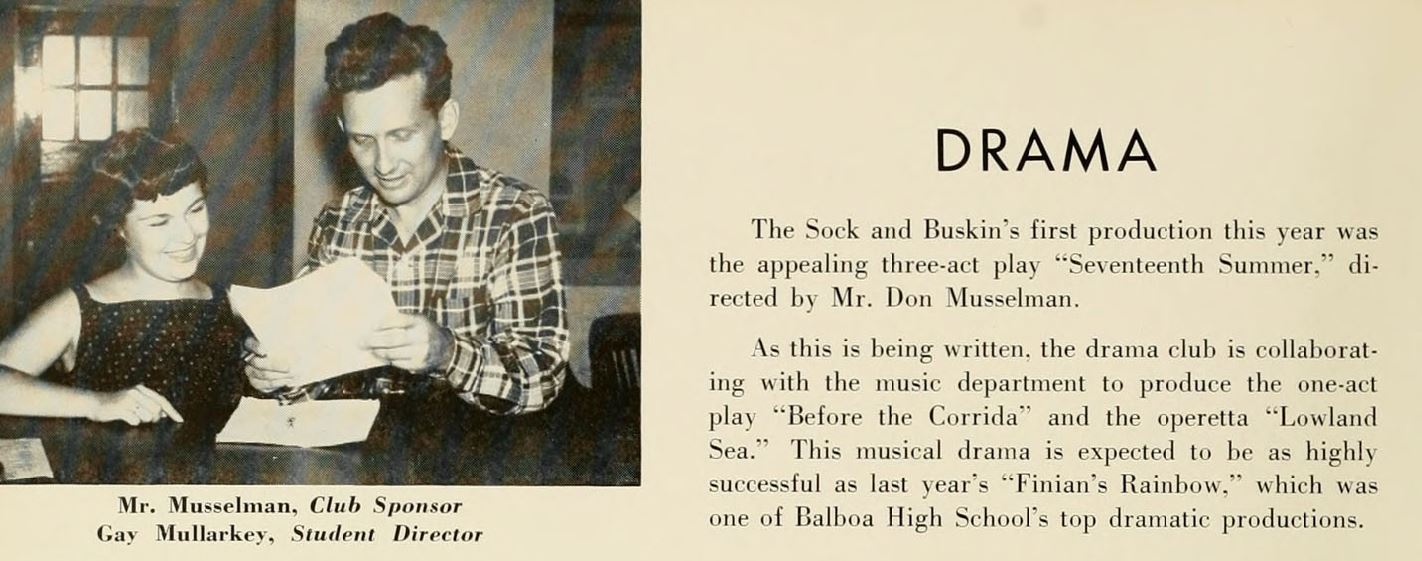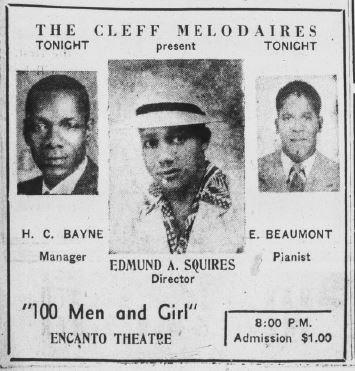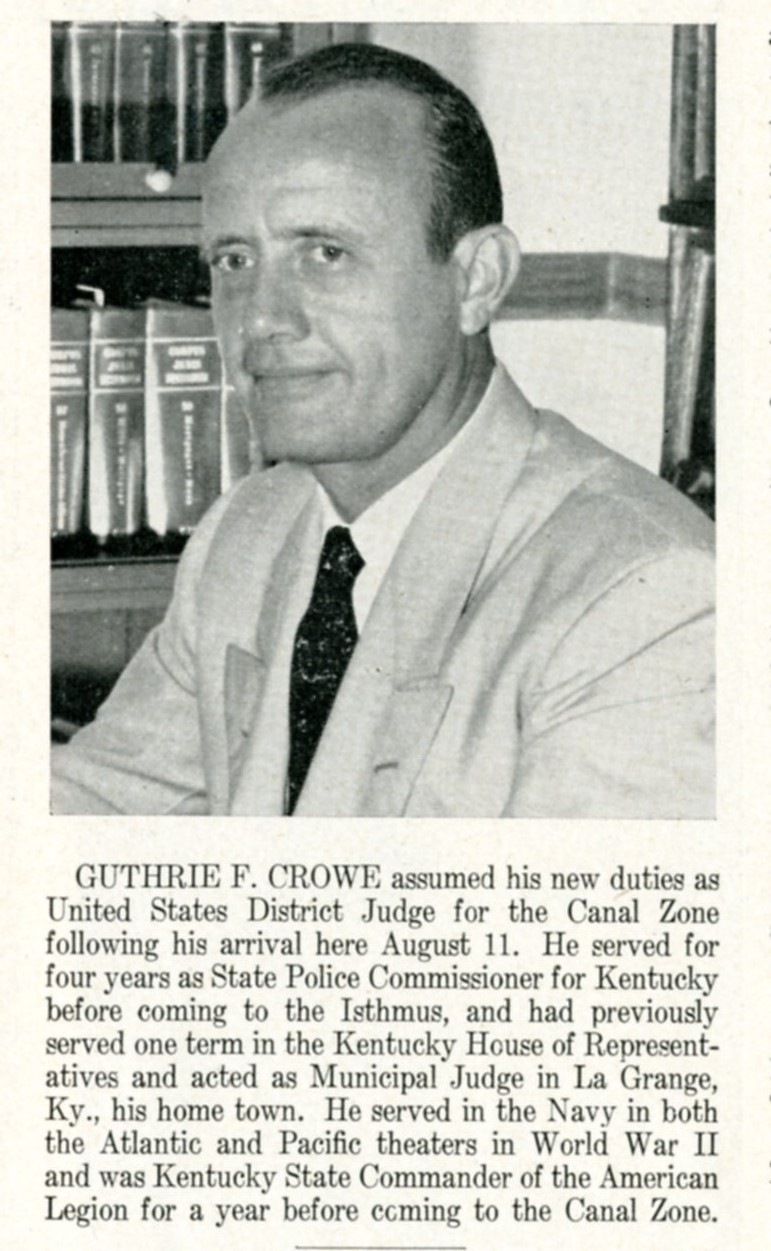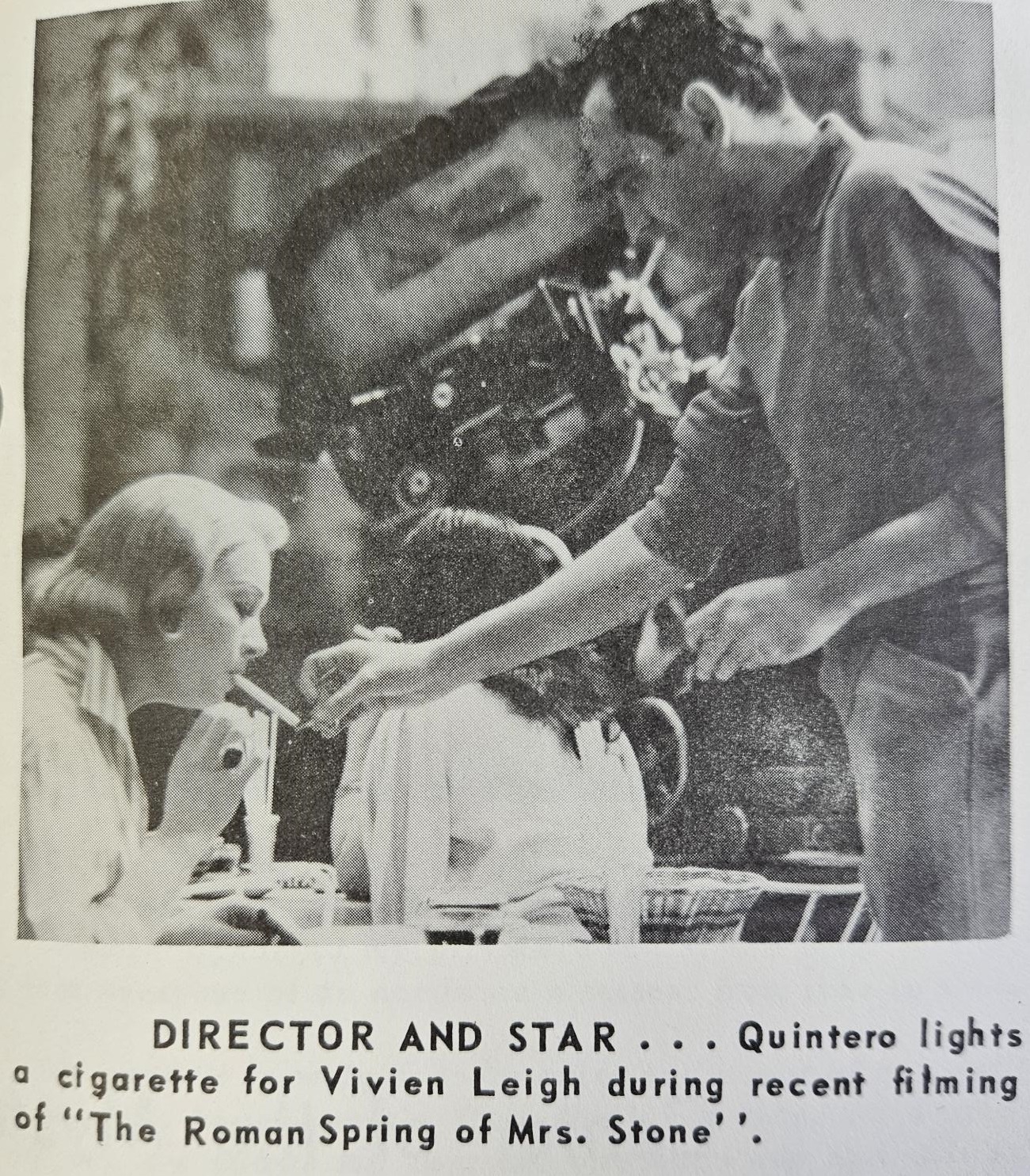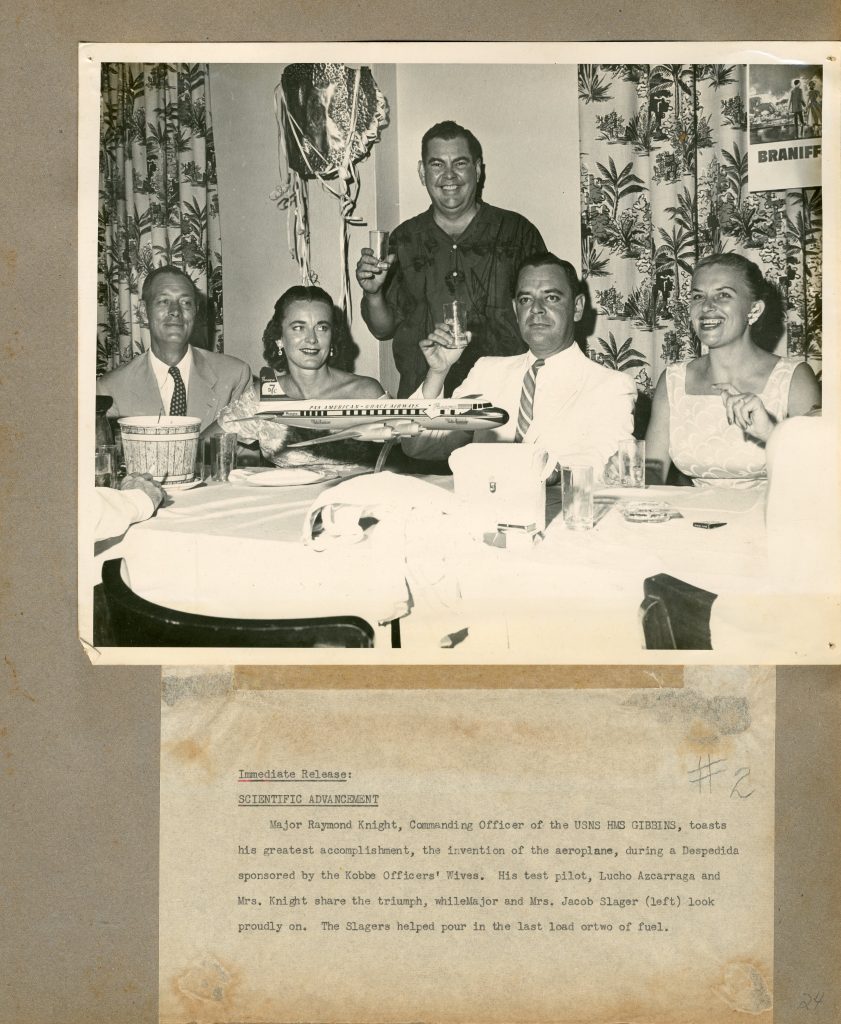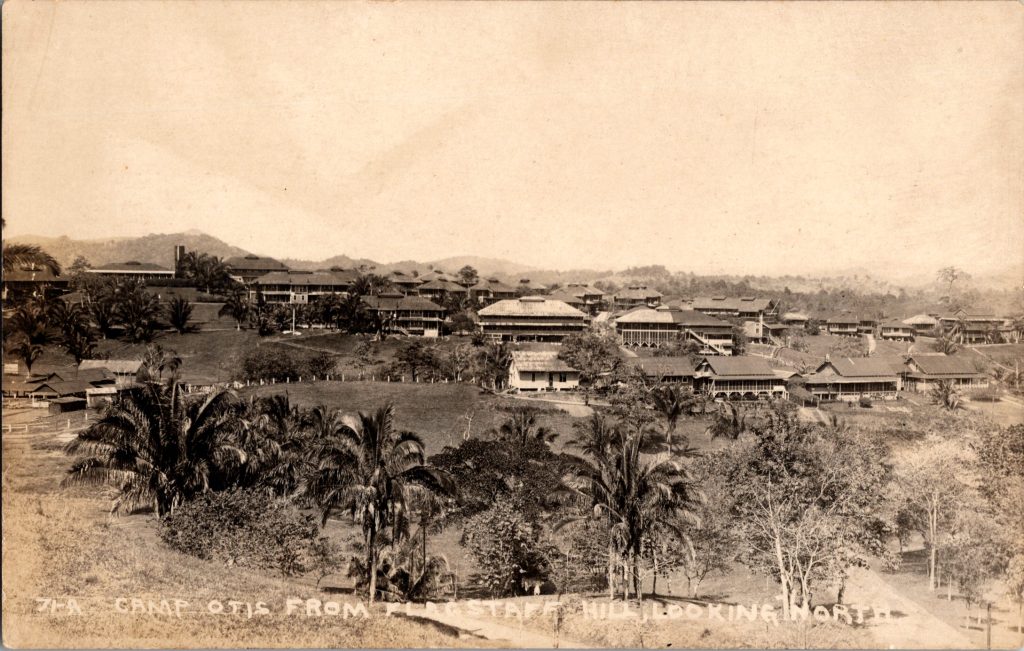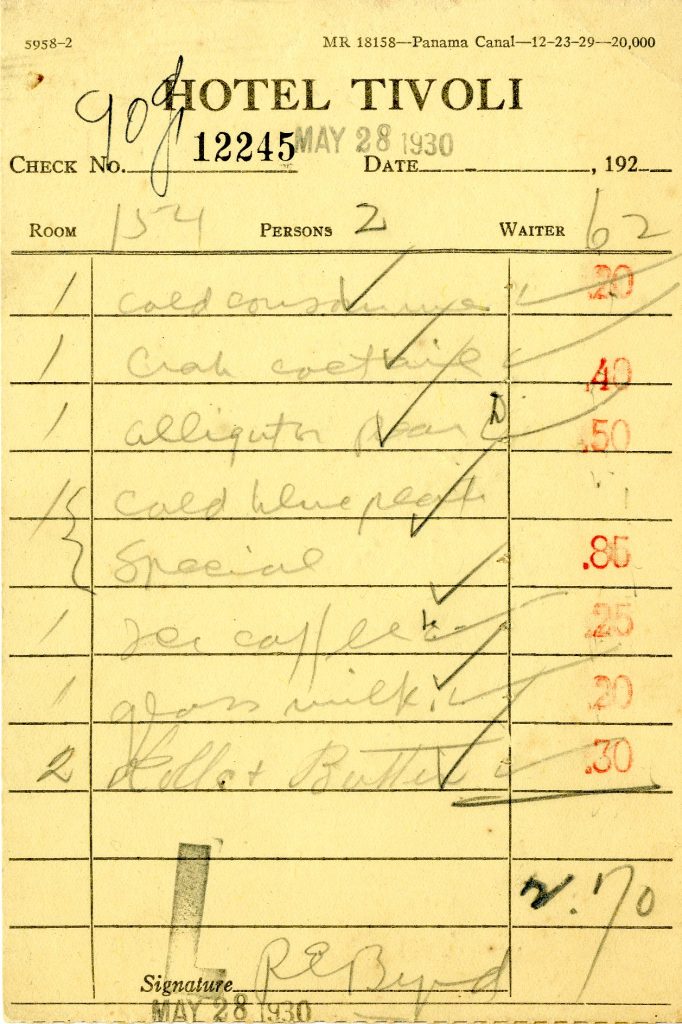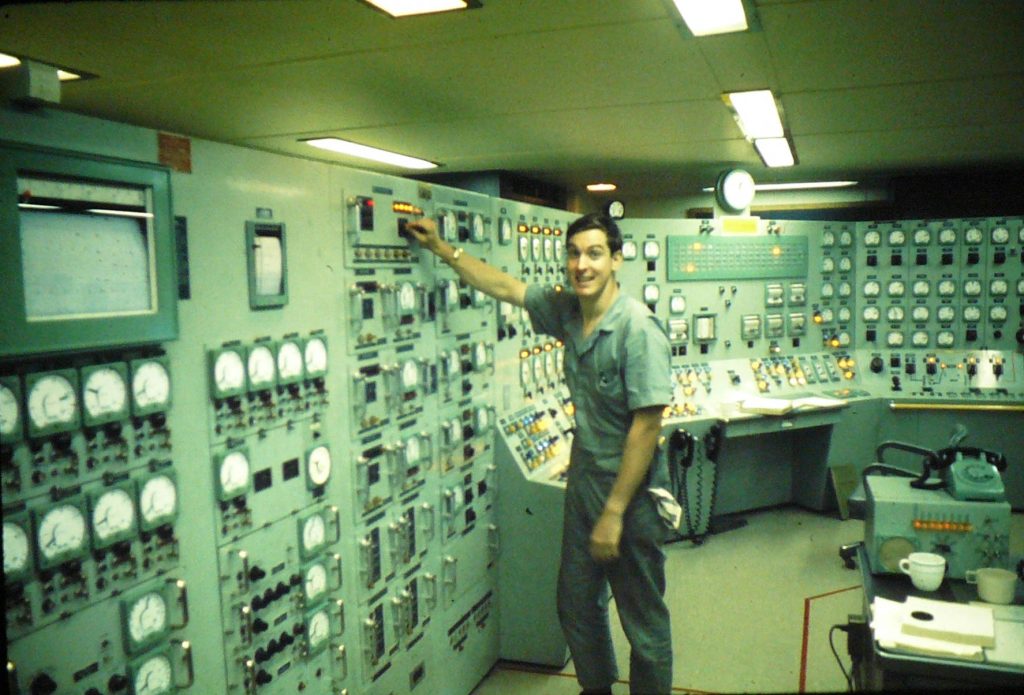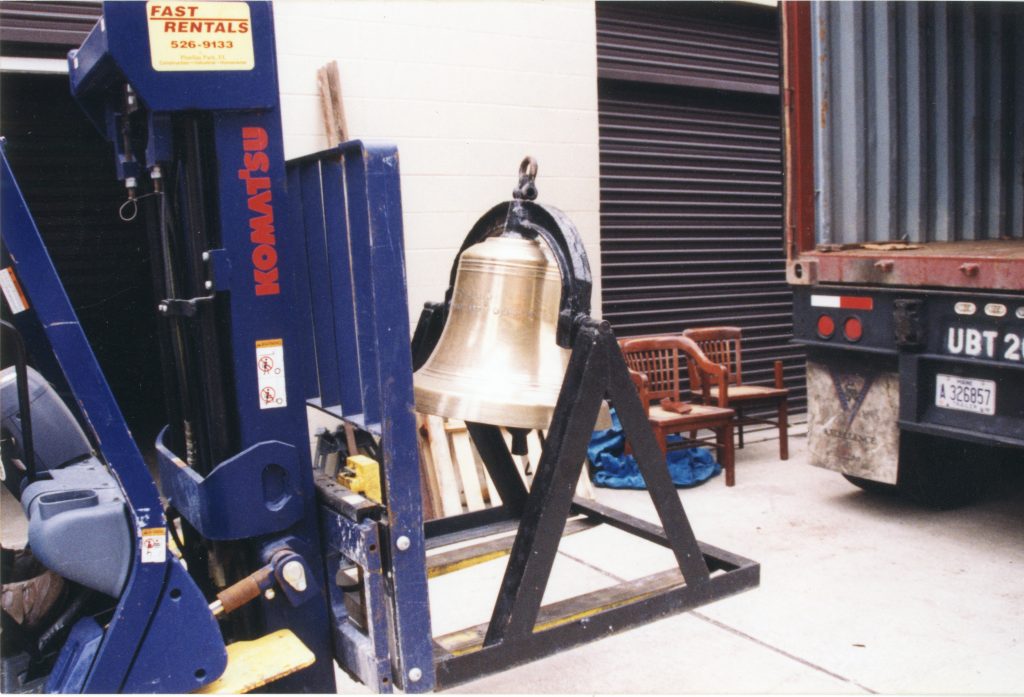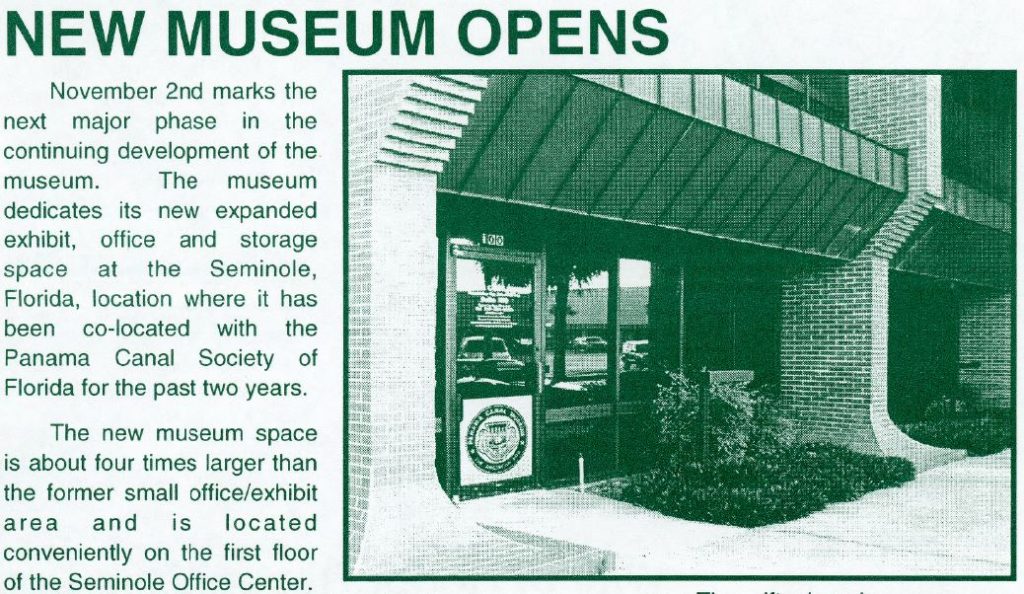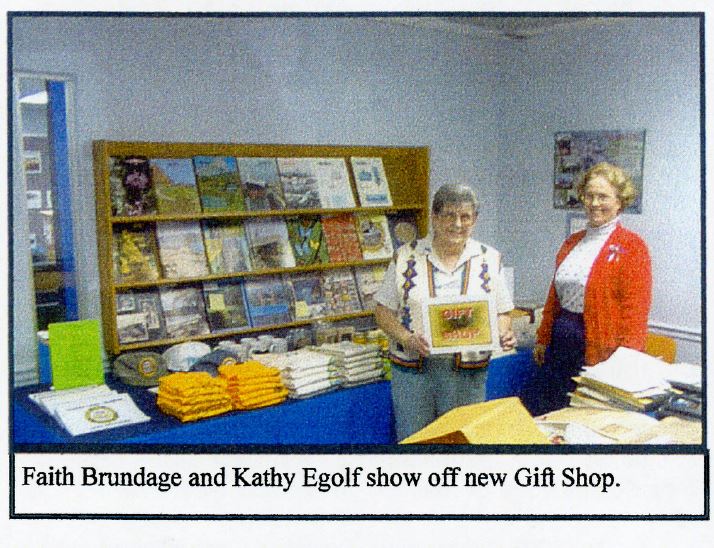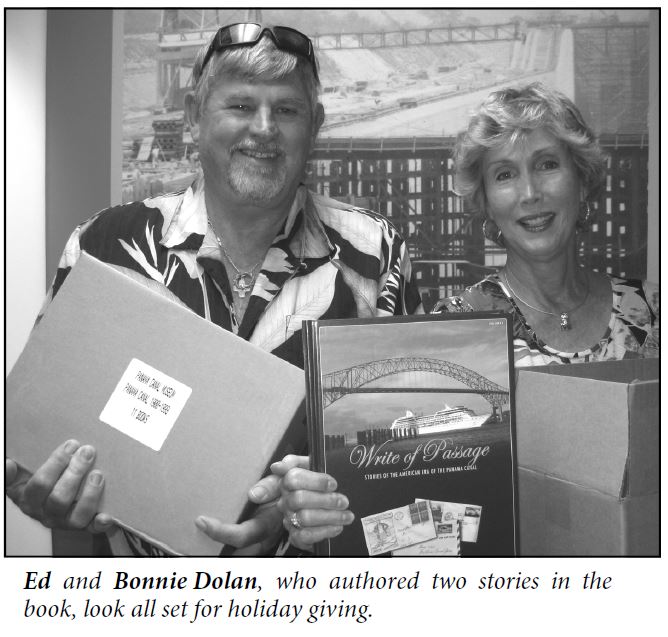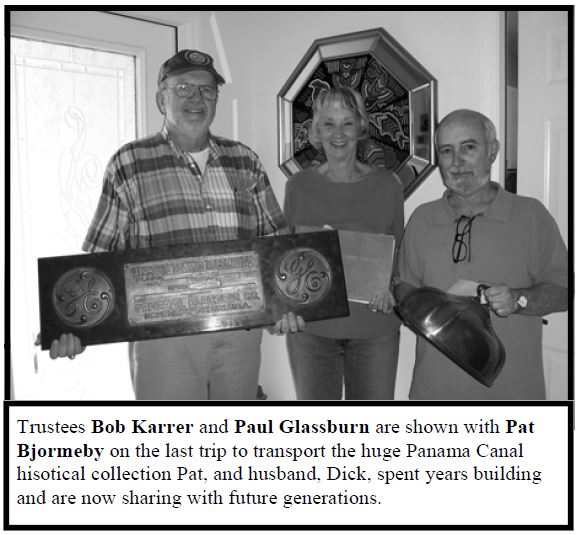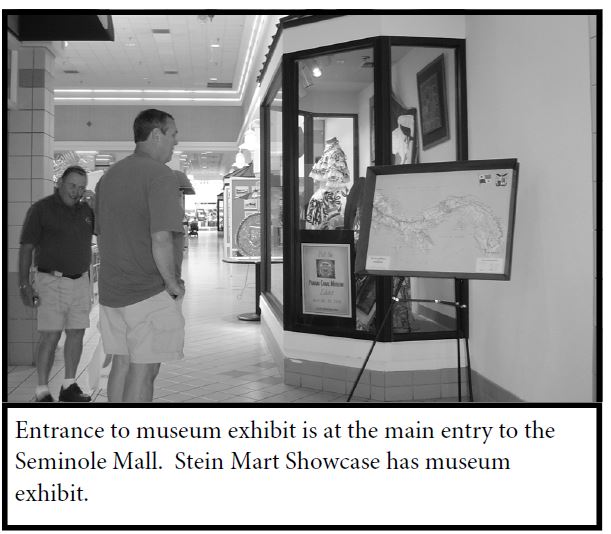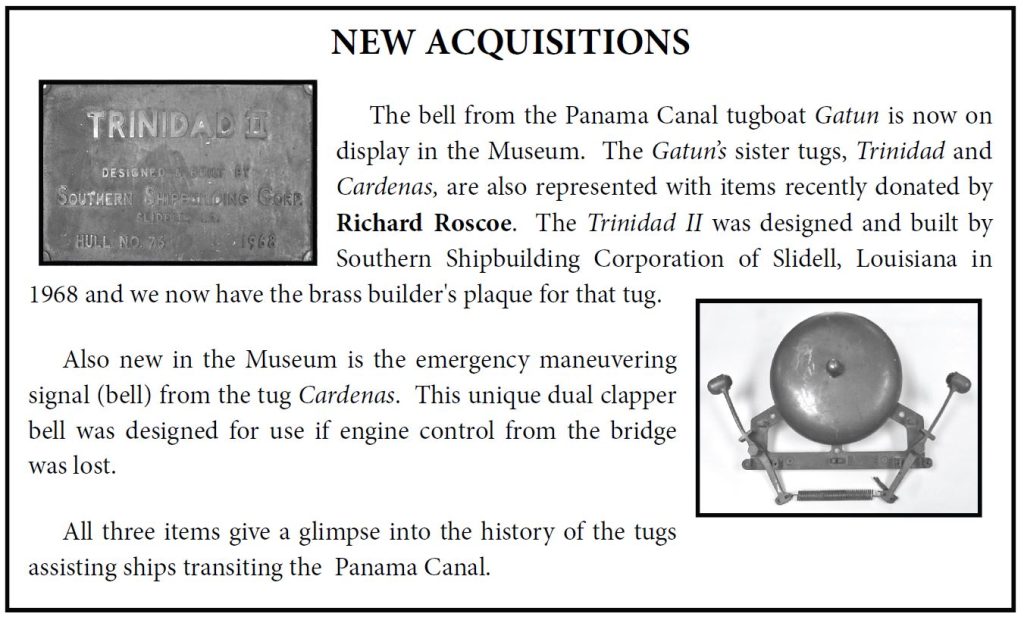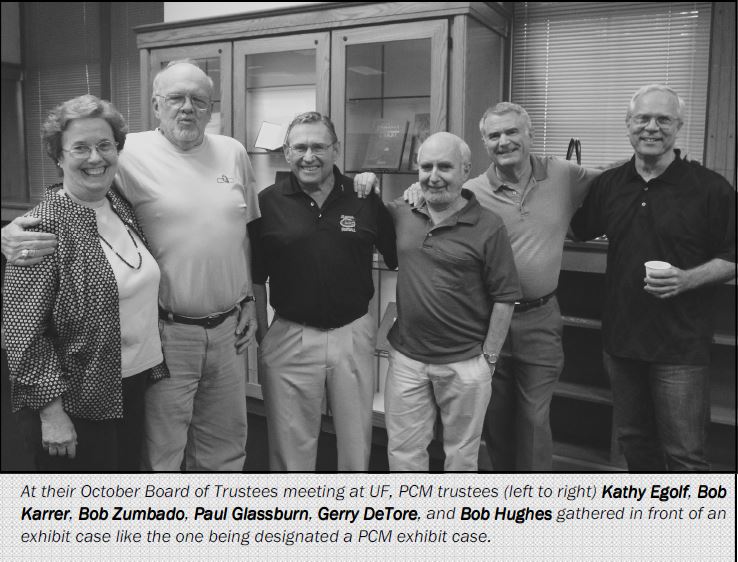Twenty-Five
-
Lessons with Lucho
Lucho Azcarraga’s name comes up in conversations and oral history interviews more than almost anyone else. So many people have fond memories of hearing him play at the Amador Officer’s Club or dancing the night away to his music at the El Panama. He is a true icon of Canal Zone and Panamanian life.
Album covers of Lucho Azcrraga records, Alegres Pascuas en Panama and Navidades en Panama: Christmas in Panama, 2005.85.1.10 and 2005.85.1.10, Gifts of Judy Benoit
Lucho got his start playing piano for silent movies at three theaters in Panama and the Canal Zone- the El Dorado from 1-3pm, Amador from 3-5pm, and the Cecilia from 5-7pm for a total of three dollars a day. When talking pictures came along he improvised and started playing the organ in the 10-minute break between shows. He slowly moved from the theaters to the “gardens”, particularly at El Rancho, where he provided entertainment both at lunch time and during the evening hours. The rest is history!
Although Lucho is known for his small combo or “conjunto”, did you know he started with an 8-piece orchestra?
This final post of the “Twenty-Five” series celebrating the 25th anniversary of the Panama Canal Museum and their continued support after the collection came to the University of Florida, was also inspired by Don Randel’s oral history interview and a story he told about taking lessons from Lucho. (See the previous post that includes clips from Don’s interview about his family’s business in Panama City and sports.)
Listen to Don’s wonderful story about taking lessons from Lucho in the clip below. You can also visit the digital collection to hear his full interview.
Use the left and right arrows to view the two photos of El Panama Hilton.

Carnival Float, February 1958, 2016.64.1, Chipi Azcarraga on maracas, Vic Herr playing congas, Edgar Ameglio behind the organ, Don Randel playing the organ. This photo is of a rehearsal for the carnival Tuesday parade in Panama City. Don also mentions some of the other people in the music and theater worlds of Panama that he remembers or that had an impact on his life and career. Use the arrows at the left and right to move through the slideshow of people that Don mentions. Do you have memories of them as well?
Amador didn’t have all the fun.
Frank Baldwin also told a unique story about Lucho in his “Memoirs of Panama and the Canal Zone.”
“My father married Lea Azcarraga, who was one of Lucho Azcarraga’s older sisters. She was born in
David, province of Chiriqui. She was one of the first women in Panama to drive a car, smoked and
played golf. She was one of the first Panamanians to learn to speak English, too. She lived in Panama
City by Simon Bolivar Plaza where Teatro National is, and worked for the Red Cross before marrying.
One year my brother and I went to the US with my father and mother. Lucho came with us, but my
father left him in New York while we went to Canada where he had arranged for Lucho to take
classes from Lew White at the Roxy Theater, which was very famous. In those days, they didn’t have
talking movies, so they had organs and pianos playing in the different theaters. Lew White was so
impressed with Lucho that he called a fellow named Jesse Crawford from the Paramount Theater to
listen to him. When we returned, my father tried to pay but they wouldn’t take the money because
they wanted Lucho to stay to play in one of the theatres. But Lucho was only 17, and wanted to
go home. Lucho had played music like the Tango, Danzón and all the Latin music for these famous
organists, and they were fascinated because they had not heard it that way before. Lucho was five
years older than I was. When I was 15 years old I played in Lucho’s orchestra. In those days it wasn’t
an orchestra, it was a “combo”, and I played the clarinet at the old Union Club. My father would
drop me off, and then Lucho would take me home later.” – Frank A. BaldwinLea Azcarraga sounds pretty interesting. We would love to know more about her too.
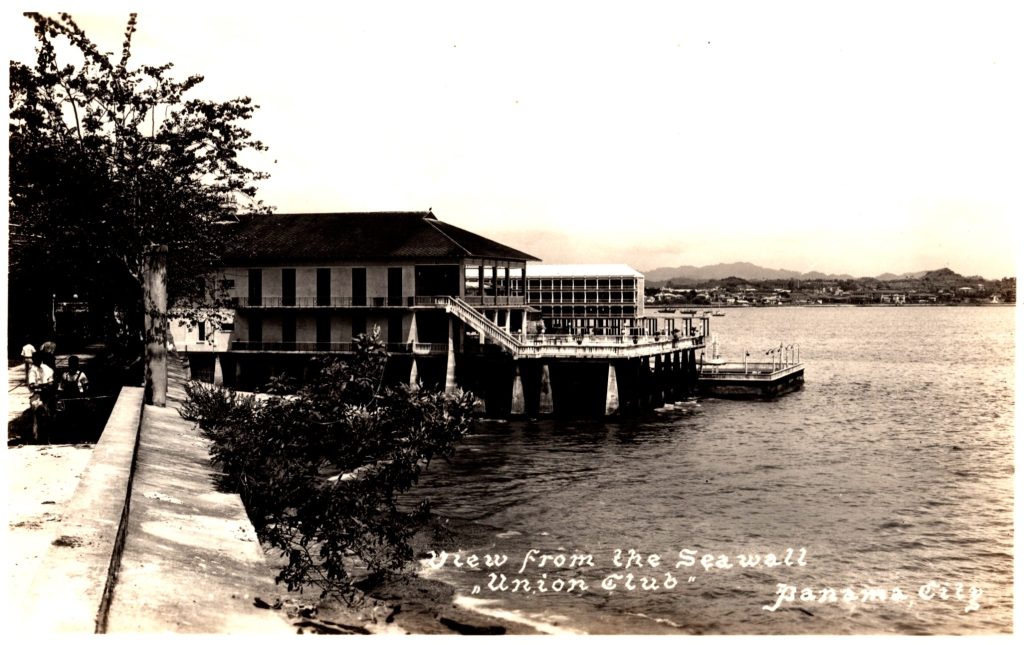
Postcard of the Union Club, Panama City, Gift of Brad Wilde, II.2021.36.106
Frank Townsend and Sydney Townsend Corbett highlight Lucho and others in their write-up The Music Makers 2022 – Lucho, Papito, Leroy, Mario, Tito, and Frank. They talk about the joy of dancing to music in Panama and the thrill of once again experiencing live Panamanian music at the Panama Canal Society Reunions each year. Read their story in the digital collection by clicking here or download a PDF below.
Lucho was born in 1912, two years before the Canal was even finished!

Lucho and Frank Townsend, 1992. From The Music Makers, II.2023.52.2
Did you know that in addition to the organ Lucho played the accordion? If you listened to the clip of Don Randel’s interview you do.
Share a comment about your favorite Lucho moment and enjoy this gallery of some of his album covers.









This post is part of our fall focus on the important work of the Panama Canal Museum and on the oral history program they began and which continues today. This year is the 25th anniversary of the founding of the Panama Canal Museum in 1998. The museum operated for 14 years in Seminole, Florida, before closing in July 2012 and transferring its collection to UF. The successes achieved by the museum paved the way for the PCMC to develop as a preeminent research collection for the study of the American era of the Canal. For more information on the history of the Museum, please visit go.ufl.edu/pcm
Between now and the end of December, we are celebrating this 25th Anniversary and hope to honor their hard work as well as that of our Friends of the PCMC group by adding $13,000 to the $12,000 that was raised by this year’s Silent Auction for a total of $25,000 – $25,000 for 25 amazing years!
If you would like help us reach the goal please donate here: https://pcmc.uflib.ufl.edu/oralhistory/. All funds will go to support the PCMC oral history program.
-
Insurance on the Isthmus

Balboa High School, Parakeet, October 9, 1954 How was coverage at one of the world’s biggest construction sites?
Earlier this year we had the pleasure of doing an oral history interview with Don Randel, Balboa High School Class of 1958. He told us about his family’s connection to the Panama Canal and a unique element of the construction days – insurance.
Don’s aunt and uncle, Sally and Henry Seymour, arrived on the Isthmus during the construction of the Canal. Sailing records indicate they went back and forth from Panama a few times before finally settling down and opening their insurance business, Seymour Agency, around 1913. Don remembers that it started off providing workers insurance for Canal employees.
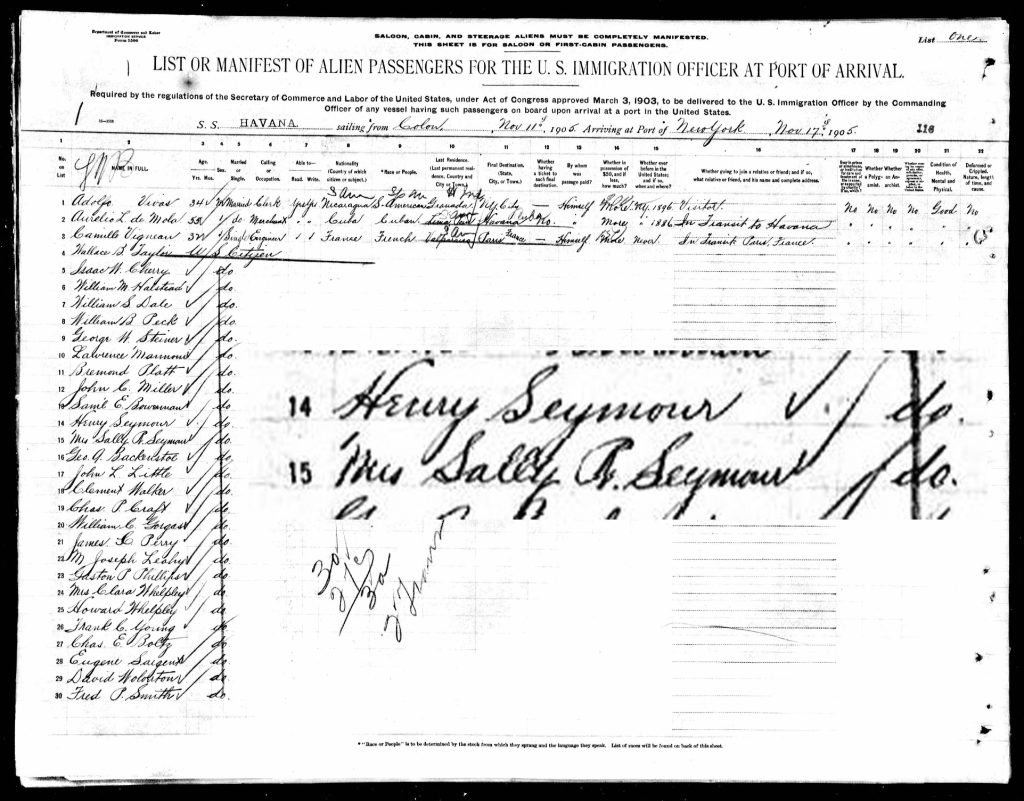
Sailing record from the S.S. Havana. Leaving Colon on November 11, 1905 and arriving in New York on November 17, 1905. We enlarged the names of Henry and Sally so you could see them. 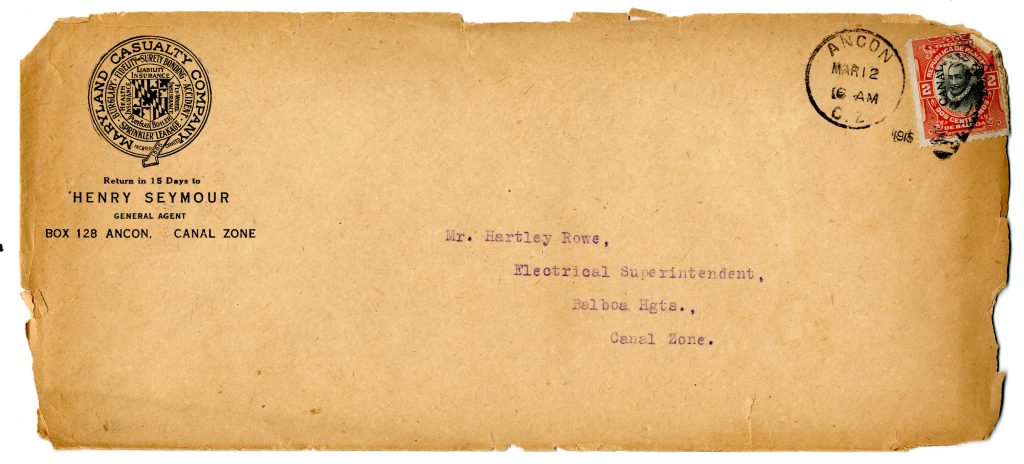
While we were working on this blog post we got a donation of a large group of old envelopes associated with the Panama Canal. We couldn’t believe that one of them was from Henry Seymour! And it was addressed to Hartley Rowe, the engineer we featured in the Manhattan in Panama blog post a few months ago. What timing! According to their Certificate of Registration, Henry and Sally lived in Camp Otis in 1914, before they later moved into more glamorous quarters (hint…it is a well known hotel on the Pacific side).
Henry Seymour passed away in 1927, but Sally kept the business going, running it out of the Tivoli Hotel until the 1940s when she decided to retire and asked Don’s father to take over the business.
Use the arrows on the left and right to click through the slideshow of U.S. Census records that include Henry and Sally Seymour living at the Tivoli.
Sally could often be seen on evenings in the dining room of the Tivoli with her beloved cocker spaniel Chica.
Listen to Don talk about his aunt and uncle and the insurance agency.
Use the left and right arrows to flip through the slideshow below to see a few Tivoli Hotel items and photos. According to the menu, Sally probably paid 50 cents for her scotch on the rocks (listen to the clip if you don’t know what this means).
The Panama American includes a notice of Sally’s farewell party in March 1946 as she prepared to permanently return to the United States. Sadly, only a few days later, the same paper shared the news of her unfortunate passing in New Orleans, part way through the voyage.
Follow the coverage of Sally’s departure and funeral service through this gallery of clips from the Panama American newspaper. (Issues: March 2, 8, 14, 20, 24, 1946)





Most of the early 20th century issues of the Panama American were digitized through funding generously provided by a family of long-time supporters of the Panama Canal Museum and the PCMC here at UF. This newspaper is one of the most utilized items in the PCMC collection and has been viewed over 13 million times.
Don’s father ran the Seymour Agency for many years and Don spoke of fond memories visiting the agency office which his father had moved into Panama City. Under his father’s ownership the agency sponsored baseball, bowling, and cricket teams.
In his interview Don talked about some of those sports teams and his own Little League team, the Firemen. We have a wonderful photo of the 1952 team that includes Don among the ranks.
Listen to a clip about sports from Don’s interview.

1952 Little League Firemen Team. A handwritten caption on the back of the photo lists the names of some coaches and players. Back Row Coaches: Huddleston, ? ; Middle Row Players: Richard Morris, ?, Ted Webb, Fred Dube, John Chase, ?, Mo Shoch, Don Randel; Front Row: ?, ?, Jim Price, ?, ?, Frank Townsend, ?, ?, ?. Gift of Frank Townsend. II.2019.39.5 Can you help us identify anyone else?
Stay tuned to hear more from Don’s interview in our next post. It might make you want to break out your old records and dance...
This post is part of our fall focus on the important work of the Panama Canal Museum and on the oral history program they began and which continues today. This year is the 25th anniversary of the founding of the Panama Canal Museum in 1998. The museum operated for 14 years in Seminole, Florida, before closing in July 2012 and transferring its collection to UF. The successes achieved by the museum paved the way for the PCMC to develop as a preeminent research collection for the study of the American era of the Canal. For more information on the history of the Museum, please visit go.ufl.edu/pcm
Between now and the end of December, we are celebrating their 25th Anniversary and hope to honor their hard work as well as that of our Friends of the PCMC group by adding $13,000 to the $12,000 that was raised by this year’s Silent Auction for a total of $25,000 – $25,000 for 25 amazing years!
If you would like help us reach the goal please donate here: https://pcmc.uflib.ufl.edu/oralhistory/. All funds will go to support the PCMC oral history program.
-
Audio Clips (and more) about Amador
Congratulations to our friends at the Biomuseo who debuted their exhibit Amador: Ayer y Hoy earlier this year. The exhibit consists of 48 panels displayed throughout the Amador Causeway and explores its history from creation during the construction of the Canal and service as a military installation through its use today as a public place for everyone to enjoy.
When the team from the Biomuseo was working on the exhibit in 2022 they came to the University of Florida for a week to conduct research. Many photographs from the PCMC collection can be seen on the panels in Panama! Their visit coincided with our annual luncheon so they were also able to meet members of the Panama Canal Society and the Friends of the Panama Canal Museum Collection and they later interviewed many about their memories of Amador and the causeway. Numerous quotes from those interviews are featured throughout the exhibit. We are working with the Biomuseo on the long term preservation of the full interviews.

Image provided by the Biomuseo The exhibit explores many different facets of the history of the causeway: history, fishing, music, art, and biodiversity to name a few.
The land that was occupied by Fort Amador and the causeway that was once part of Fort Grant were created with material excavated during the construction of the Panama Canal. The area of Fort Amador was known as the “Balboa Dump” and was originally covered by water. The causeway served as a breakwater for the Pacific entrance of the Canal, and also connected the Canal Zone to the “fortified islands” of Naos, Culebra, Perico, and Flamenco which housed important defense installations. The railroad that had been used to build the breakwater was originally left in place to move ammunition and other military equipment.

These early photos show some of the different phases of construction Click on an image to enlarge it.
Amador, the causeway, and particularly the Officer’s Club were a big part of life for many. The Amador Officer’s Club housed high school dances, many enjoyed fishing off the causeway, and swimming at the beach club.
Enjoy the following clips from our oral history collection.
Interview with Malena, Didi, and Fred Bremer, https://ufdc.ufl.edu/aa00013365/00001 
Panama Canal Review, October 1952 Interview with Jose Vanga, https://ufdc.ufl.edu/aa00040427/00001 
Postcard of Fort Amador, II.2021.36.106 
The Tropic Times, June 15, 1990 
During a recent trip to Panama we had the pleasure of spending a wonderful morning with our Biomuseo friends who showed us around the causeway, the old Officers Club which is now their work space, and gave us a great drive-by tour of some iconic buildings in the former Canal Zone.
Visit the virtual exhibit to hear some of the clips (https://biomuseo.org/amador/) and next time you are in Panama, stop by the causeway, enjoy the beautiful view, and explore the exhibit which was funded by the public diplomacy grant program of the United States Embassy in Panama.
Panel number 31 is pretty fun…
The fabulous team at the Biomuseo is putting the finishing touches on the next exhibit which will go up in Ciudad del Saber, which occupies the land that was formerly Ft. Clayton.
What are your favorite memories of the causeway?

Panama Canal Review, October 1979
This post is part of our fall focus on the important work of the Panama Canal Museum and on the oral history program they began and which continues today. This year is the 25th anniversary of the founding of the Panama Canal Museum in 1998. The museum operated for 14 years in Seminole, Florida, before closing in July 2012 and transferring its collection to UF. The successes achieved by the museum paved the way for the PCMC to develop as a preeminent research collection for the study of the American era of the Canal. For more information on the history of the Museum, please visit go.ufl.edu/pcm
Between now and the end of December, we are celebrating their 25th Anniversary and hope to honor their hard work as well as that of our Friends of the PCMC group by adding $13,000 to the $12,000 that was raised by this year’s Silent Auction for a total of $25,000 – $25,000 for 25 amazing years!
If you would like help us reach the goal please donate here: https://pcmc.uflib.ufl.edu/oralhistory/. All funds will go to support the PCMC oral history program.
-
Stuff about Sturgis

The Sturgis docked in Gatun Lake. U.S. Army Photo courtesy of Office of History, HQ, U.S. Army Corps of Engineers. Oral history interviews are a great place to learn about parts of Panama Canal history that you might not have known about or have forgotten. At this year’s Panama Canal Society reunion in Orlando, we had the pleasure of meeting and talking to Carol Hellums.
She and her husband Bill had done an interview with the Panama Canal Museum in 2011 and it opens with a great story about how they met in 1968 on an airplane headed to Panama. Bill was moving down to serve as part of the crew on the Sturgis, and Carol was visiting her parents.
Carol taught us about the MH-1A pressurized water nuclear reactor, aka the Sturgis, the first floating nuclear power station. It was built by the Army Reactors Branch of the Army Corps of Engineers as a way to generate power in remote, inaccessible, or difficult locations – the “MH” stands for mobile, high power. The Sturgis was a converted Liberty Ship, a special class of cargo ship that was built during World War II. Because the vessel would be stationary for the majority of its life it was re-designed to be a towed craft, and it was taken to its home near the Gatun Spillway in August 1968.

Sturgis in Gatun Lake. Image from the U.S. Army Corps of Engineers exhibit Army Nuclear Power Program – MH-1A Sturgis. In the early months of 1968, the Canal experienced a water shortage that affected both the operations of the Canal and the electricity supplied to the Canal Zone which was provided by the hydroelectric power station at Gatun Dam. By subsidizing the power station, the water that would have been used could instead be reserved for transiting ships.
The Sturgis generated electricity for the Canal Zone from 1968-1975, along with a second barge, the diesel-fueled Andrew J. Weber added in November 1968. It is estimated that they helped reserve over one trillion gallons of water for use in Canal operations.
Bill worked on the Sturgis monitoring the environment, taking water and sediment samples under the boat, and gathering biomass further afield in the jungles for radiological analysis. He and Carol joke that he basically got to fish in the Canal Zone for a living. Listen to a clip from their oral history below:
Transcript In the clip Bill mentions that The Big Picture, a news series produced by the U.S. Army, came down to Panama and filmed him. It took a while, but after watching a lot of episodes I finally found the one that features the Sturgis! View the episode below. The section about the Sturgis begins at 17:17:
Eventually two turbines were added to the Canal system and the Sturgis became obsolete. This story reminds us that the water shortage the Canal is experiencing today is not a new problem and that numerous efforts have been made to mitigate the issue over time. Creative solutions will undoubtedly continue be a part of the Canal’s future as it faces increasing environmental challenges.
In their interview, Bill also told an incredible story about a storm the Sturgis weathered during it’s trip back to Ft. Belvoir, Virginia to begin the deactivation of the reactor. Listen to a clip from the story:
Transcript Click through the slideshow below by pressing the arrows at the left and right sides of the image:
After the extensive process of deactivation, the ship was “mothballed” as part of the James River Reserve Fleet. Its final decontamination began in 2014 and by 2019 it had been scrapped.
To learn more about the origin, life, and decommissioning of the Sturgis view this U.S. Army Corps of Engineers exhibit: https://www.usace.army.mil/About/History/Exhibits/Nuclear-Power-Program/Sturgis/
To listen to Bill and Carol’s full interview visit out digital collection: An Interview with William and Carol Hellums
Do you remember seeing the Sturgis? Do you have any stories about the ship’s time at the Canal?
This post is part of our fall focus on the important work of the Panama Canal Museum and on the oral history program they began and which continues today. This year is the 25th anniversary of the founding of the Panama Canal Museum in 1998. The museum operated for 14 years in Seminole, Florida, before closing in July 2012 and transferring its collection to UF. The successes achieved by the museum paved the way for the PCMC to develop as a preeminent research collection for the study of the American era of the Canal. For more information on the history of the Museum, please visit go.ufl.edu/pcm
Between now and the end of December, we are celebrating their 25th Anniversary and hope to honor their hard work as well as that of our Friends of the PCMC group by adding $13,000 to the $12,000 that was raised by this year’s Silent Auction for a total of $25,000 – $25,000 for 25 amazing years!
If you would like help us reach the goal please donate here: https://pcmc.uflib.ufl.edu/oralhistory/. All funds will go to support the PCMC oral history program.
-
Twenty-Five
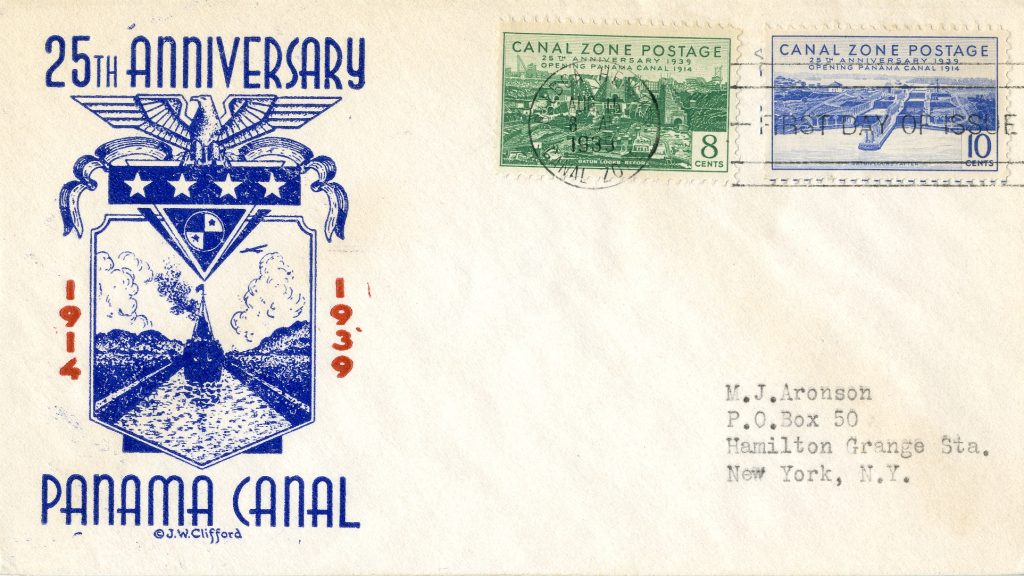
Envelope created to celebrate the 25th Anniversary of the Panama Canal, 1914-1939. Two Canal Zone stamps also created to celebrate the 25th Anniversary, Scott 126 and 127. Gift of Dr. Carl A. and Martha B. Peterson. II.2018.89.1.
Happy 25th Anniversary to the Panama Canal Museum

This year is the 25th anniversary of the founding of the Panama Canal Museum in 1998. The museum successfully operated for 14 years in Seminole, Florida, before closing in July 2012 and transferring its collection to UF. The successes achieved by the museum over those 14 years paved the way for the PCMC to develop as a preeminent research collection for the study of the American era of the Canal. For more information on the history of the Museum, please visit go.ufl.edu/pcm
Twenty-five years ago a group of individuals got together with the common goal of preserving the history of the American Era of the Panama Canal. Early on a committee was established to acquire the items needed for this “Repository of Memories”: artifacts, papers, photographs, scrapbooks, diaries, letters, yearbooks, programs, commissary memorabilia, reports, operations manuals, books, signs…you name it. Those treasures became the foundation of the Panama Canal Museum and were used to create permanent exhibits about the Spanish, French, and American Eras of the Canal, the Tivoli, and the Panama Railroad as well as 17 rotating and traveling exhibits. Under their stewardship the collection grew to over 13,000 objects.
Enjoy this slideshow highlighting PCM’s history. Press the arrows at the right and left to move through the images.
In addition to building and running the museum, they earned federal grants, had a gift shop, created educational curriculum, designed ornaments, made a board game, hosted potluck lunches (including a lunch with “Teddy Roosevelt” in 2008), ran a silent auction and created exhibits to display at the Panama Canal Society Reunion, and published three books: Opening the Gates to Canal Cuisine: Preserving the American Era in 2005, Write of Passage: Stories of the American Era of the Panama Canal in 2008, and Panama Canal Townsites in 2012. This list goes on – their work and dedication was impressive.
They even got a phone call from the popular game show “Who Wants to be a Millionaire?” with a request to answer some questions about the Panama Canal for the program! Does anyone know if they ever asked a contestant the question?
The video below offers a small glimpse into their efforts.
Although the Museum’s collection officially became part of the University of Florida in 2012, the founders and friends of the original museum have continued to steward, support, and build the collection. They are an essential part of the success of the Panama Canal Museum Collection at UF.

Panama Canal Museum Review, Spring/Summer 2011 Since the collection’s arrival at UF, it has grown to over 25,000 objects, more than 13,000 pages/items have been digitized, and our Friends have helped raise over $1.1 million to support it. In 2017, we opened the Albert H. Nahmad Panama Canal Gallery where the Panama Canal Museum’s legacy lives on through annual rotating exhibitions.
The Silent Auction that the Museum started hosting at the Panama Canal Society Reunion in 2003 has also continued and is now run by the Friends of the Panama Canal Museum Collection. The current auction committee includes some familiar faces from the Panama Canal Museum’s vendor tables, “The Walkerettes”.

The Walker sisters Mickey, Jeanne, and Carol and their aunt Emily Bliss volunteer, running the Panama Canal Museum’s vendor tables at the Panama Canal Society reunion in 2011. Read the Panama Canal Museum Review’s wonderful write up about these ladies and their families multi-generational history at the Canal on page six of the Fall/Winter 2011 issue. Between now and the end of December, we are hoping to honor their hard work by adding $13,000 to the $12,000 that the auction raised at the reunion this year for a total of $25,000 – $25,000 for 25 amazing years!
If you would like help us reach the goal please donate here: https://pcmc.uflib.ufl.edu/oralhistory/. All funds will go to support the PCMC oral history program.
Another happy anniversary to the Panama Canal Museum and a huge thank you for everything you have done to collect and preserve this history!
Back in 2003 Leo Krziza made a similar challenge – he offered to donate $25,000 to the museum if other donations could be raised to match it. The response exceeded his expectations with gifts from others totaling $44,000. Leo presented his check, written in memory of his sister Esther, to Joe Wood at the Panama Canal Society Reunion.
